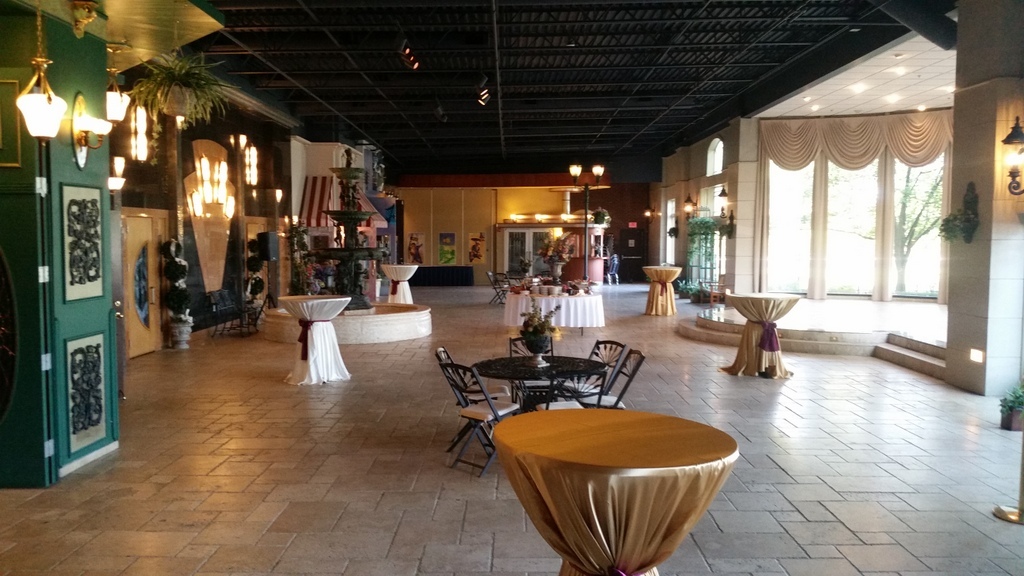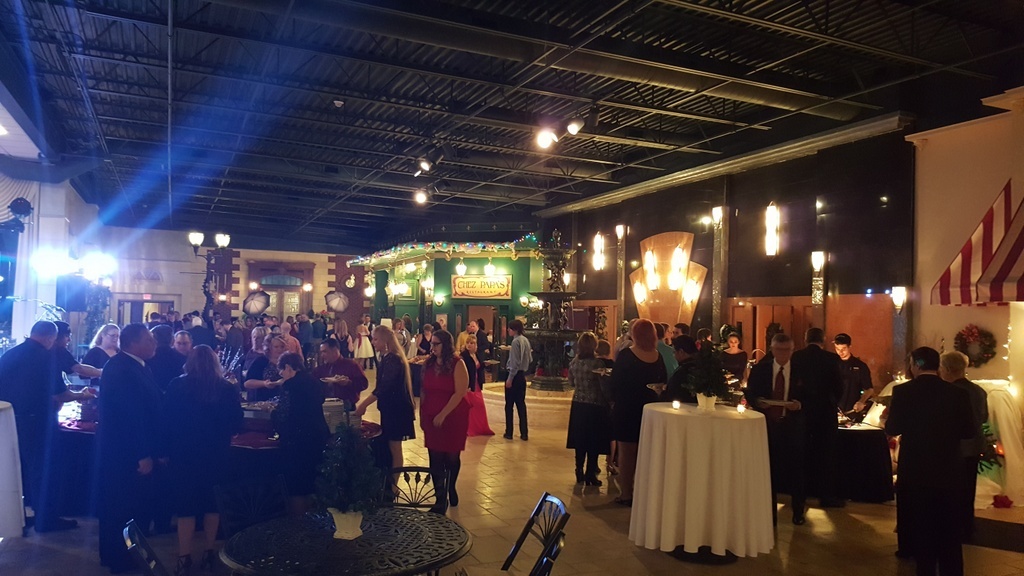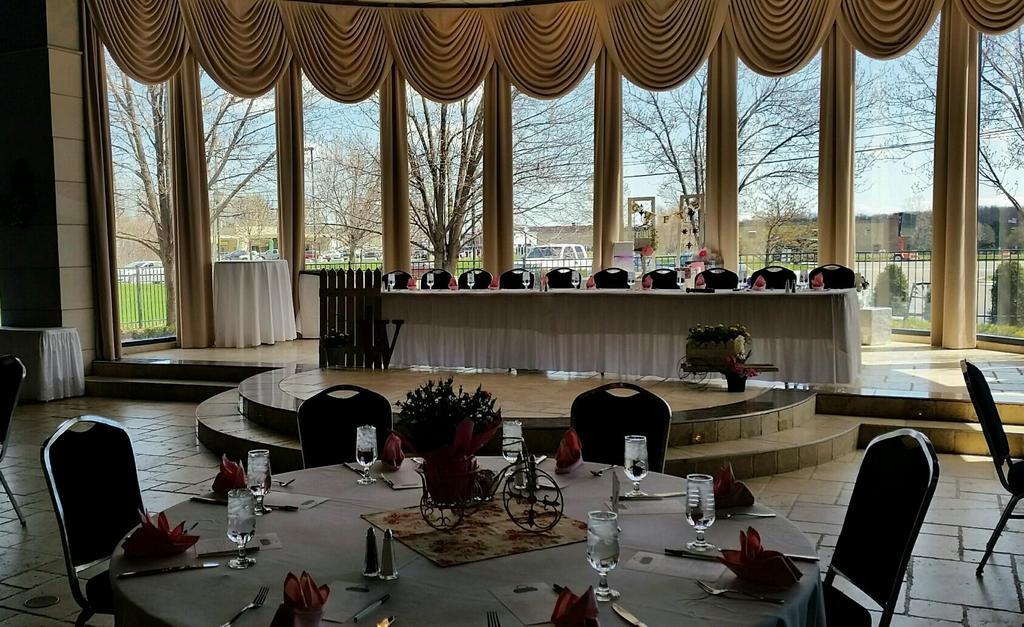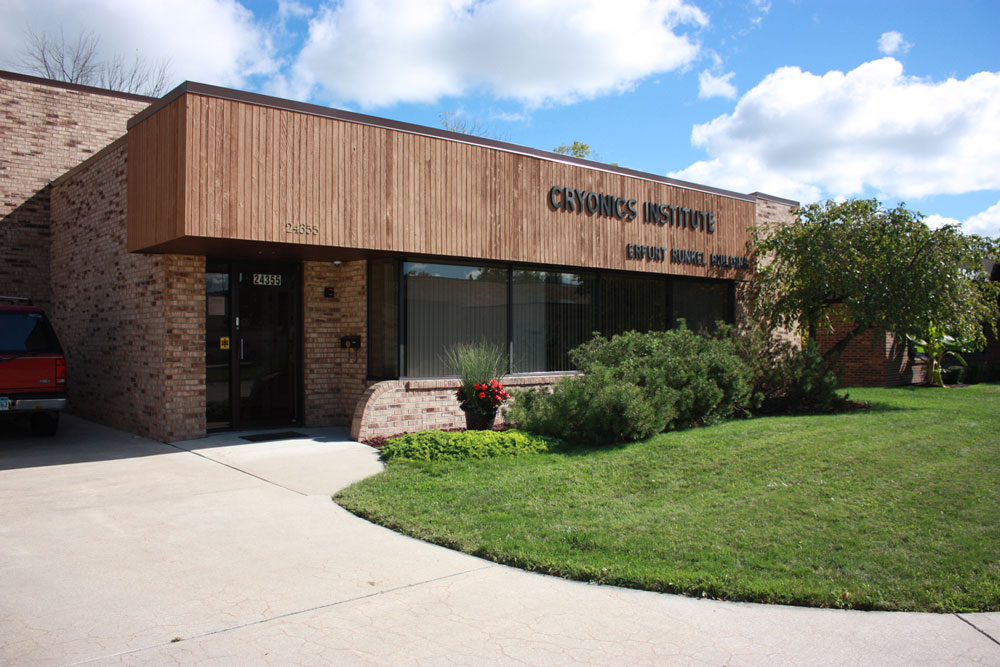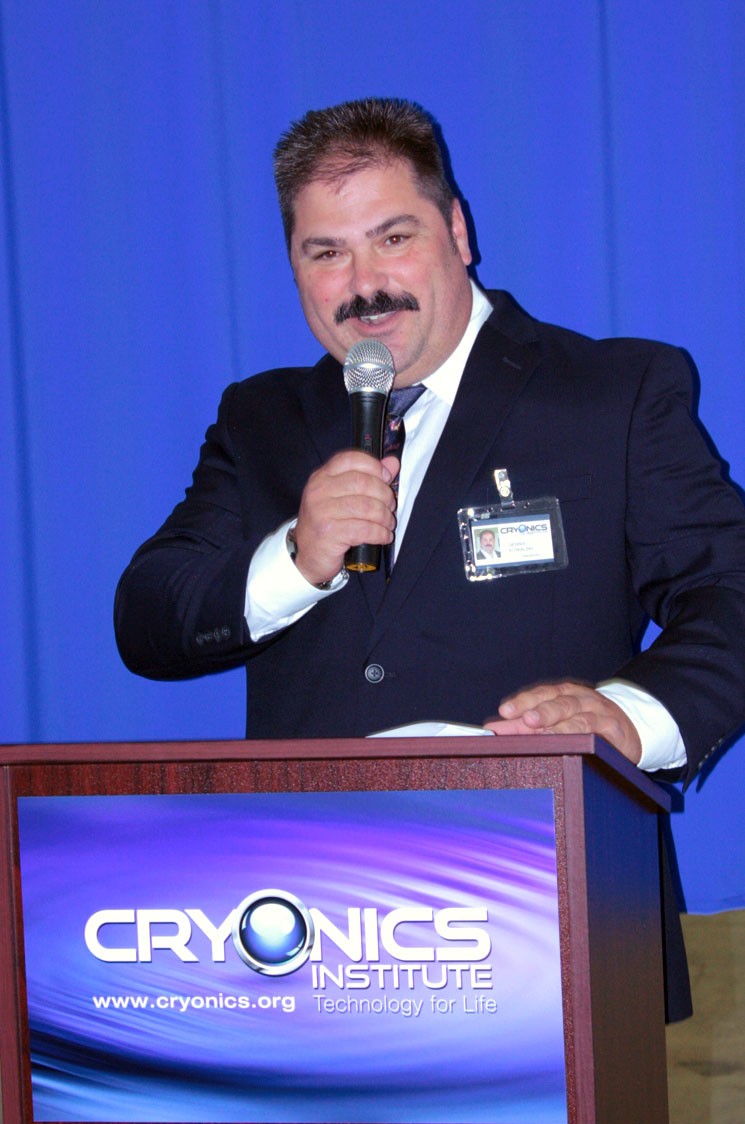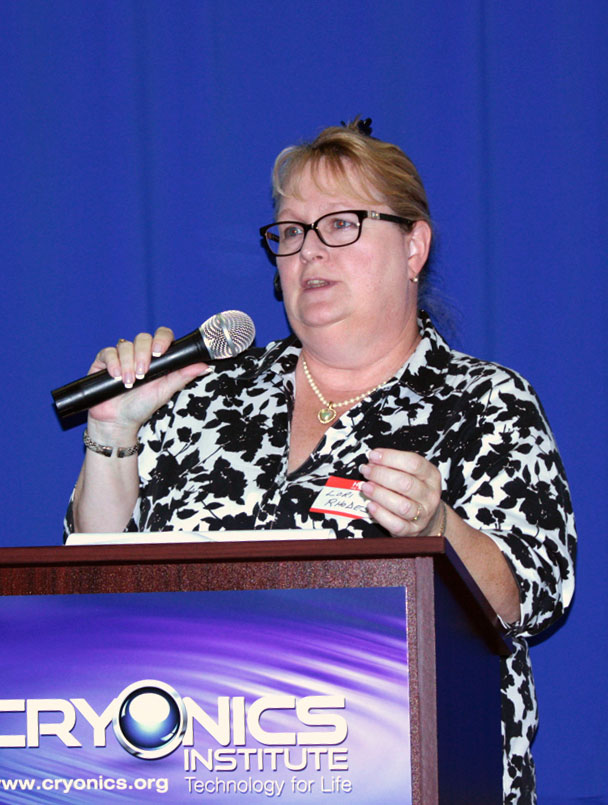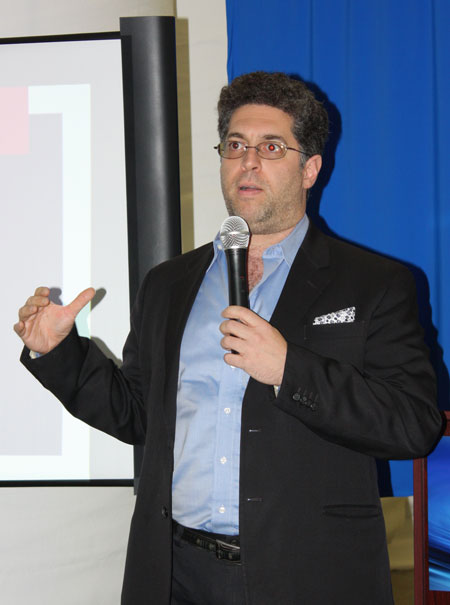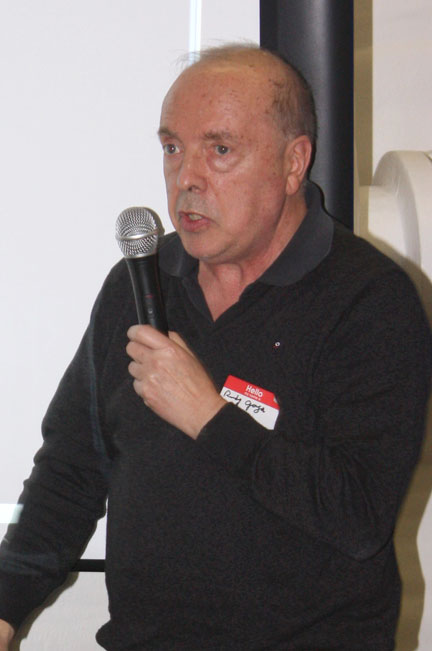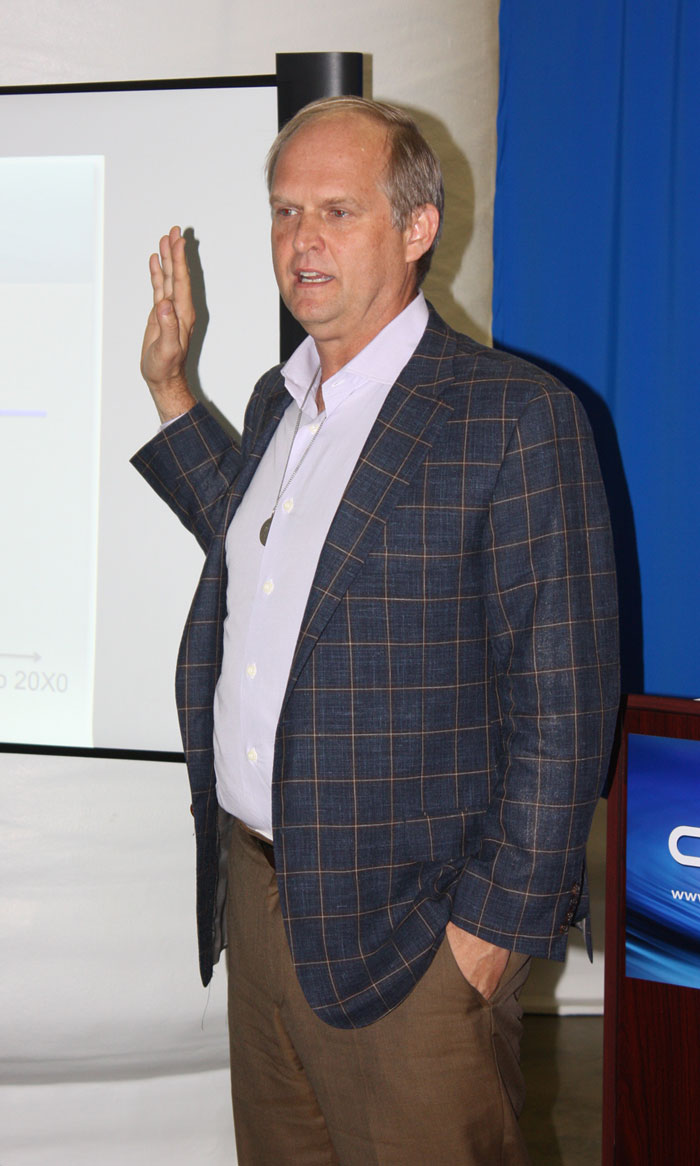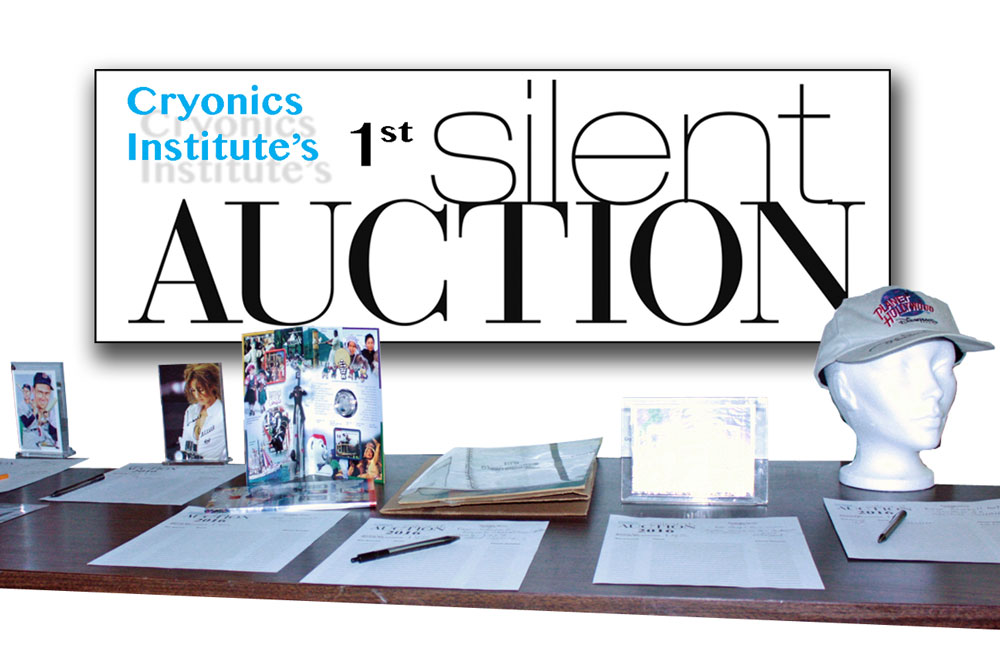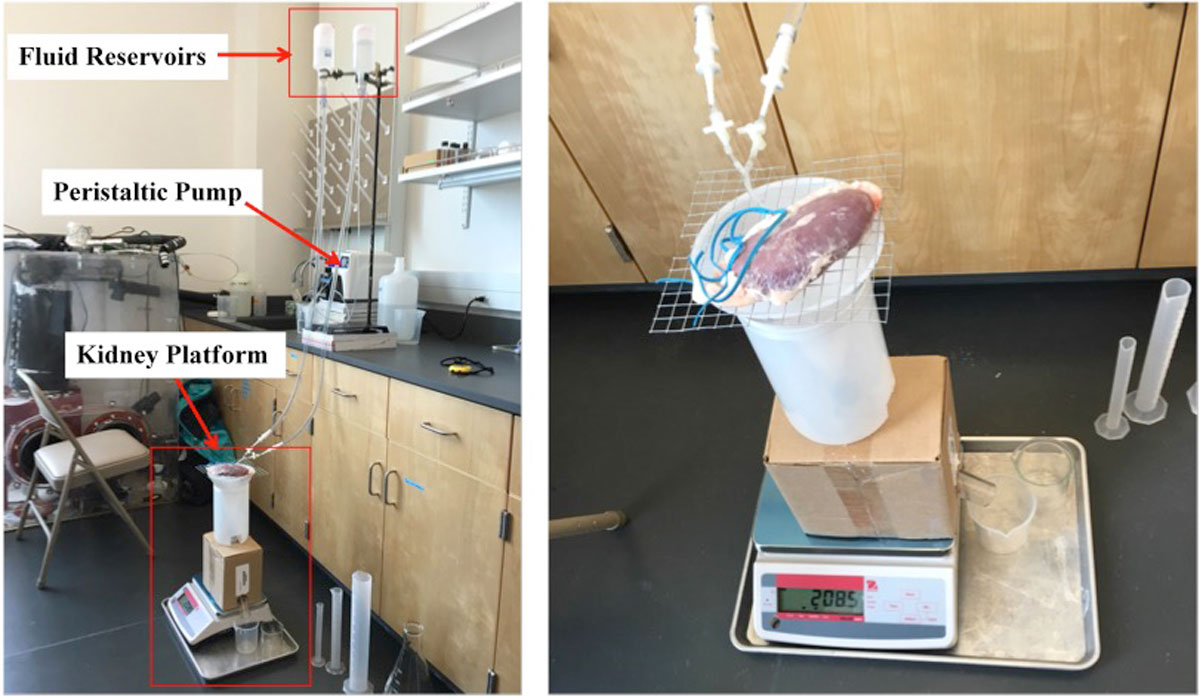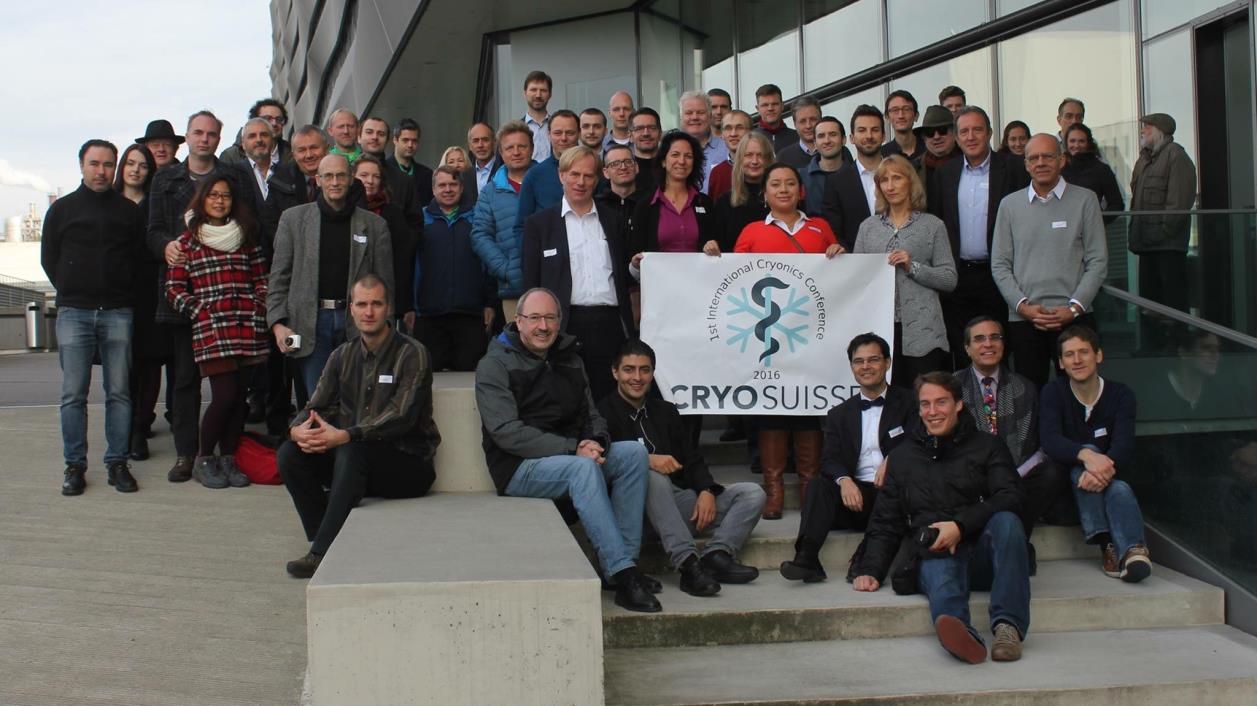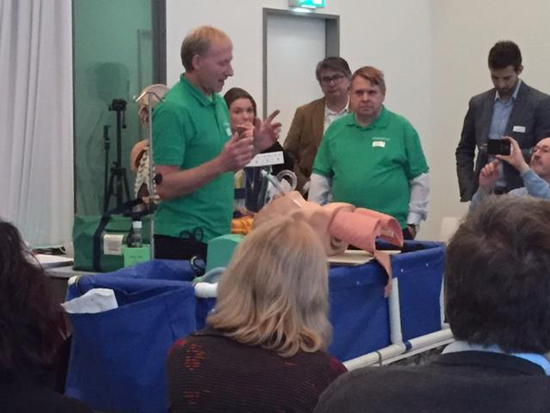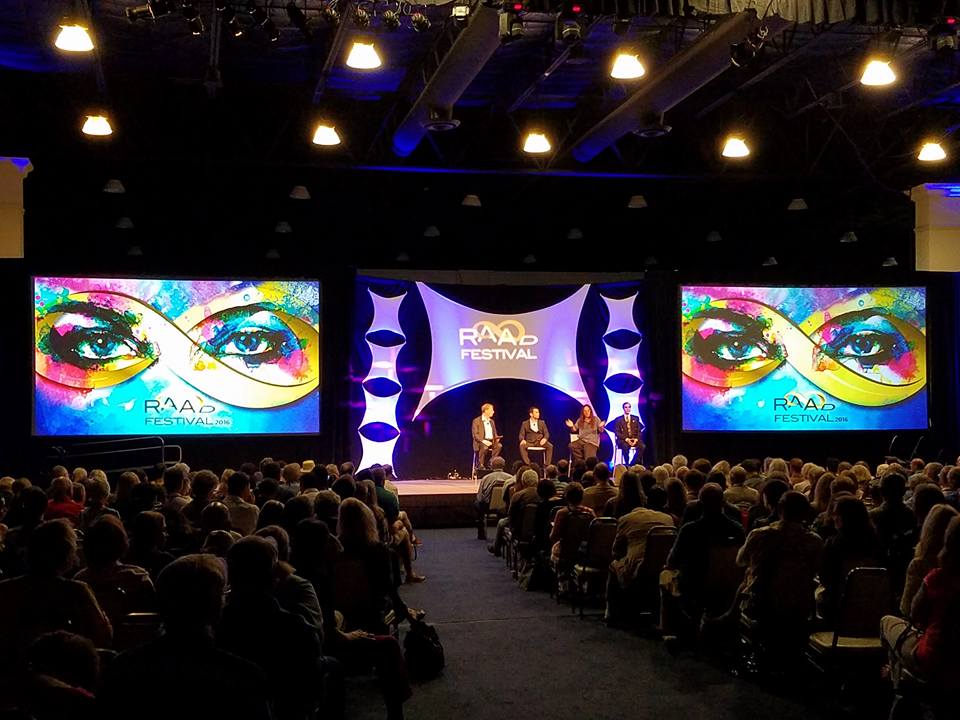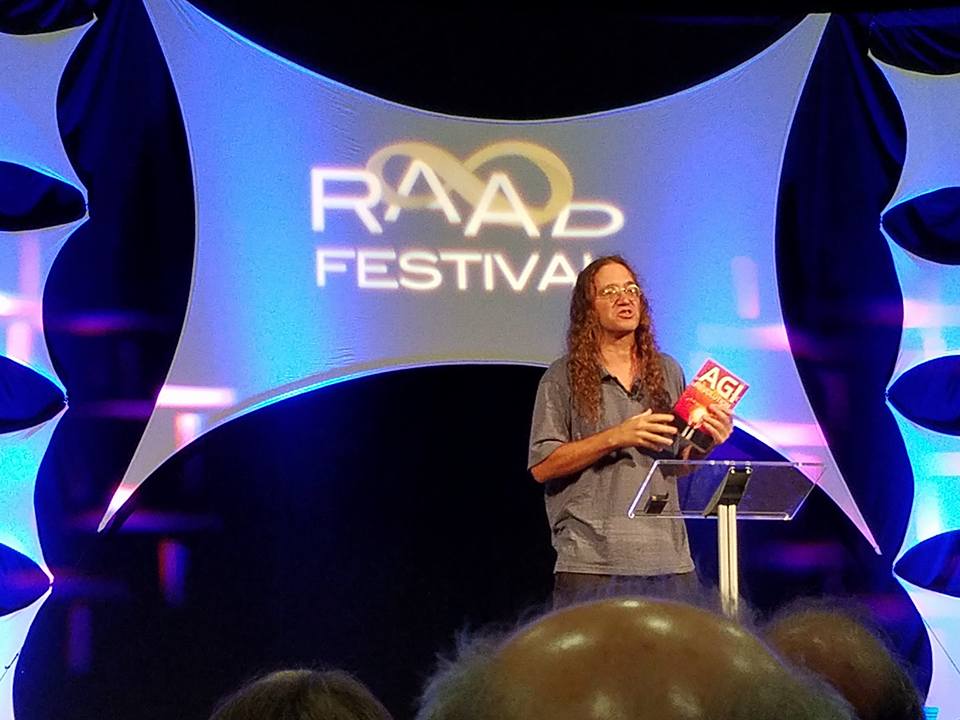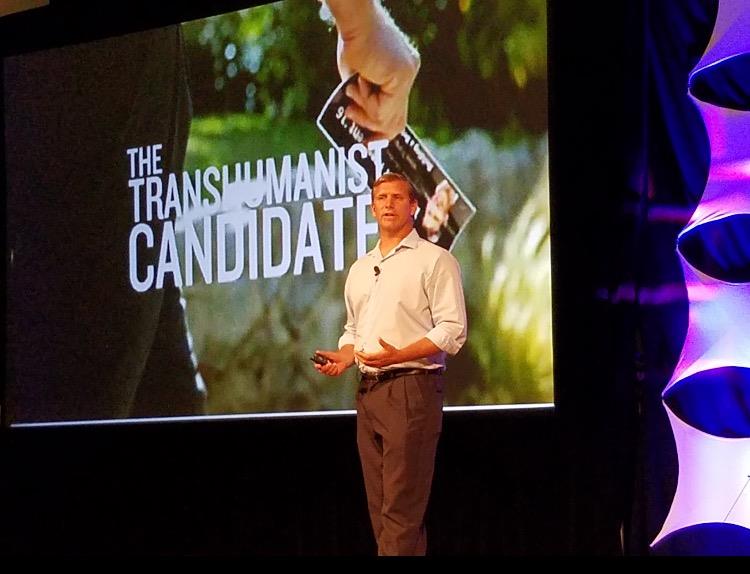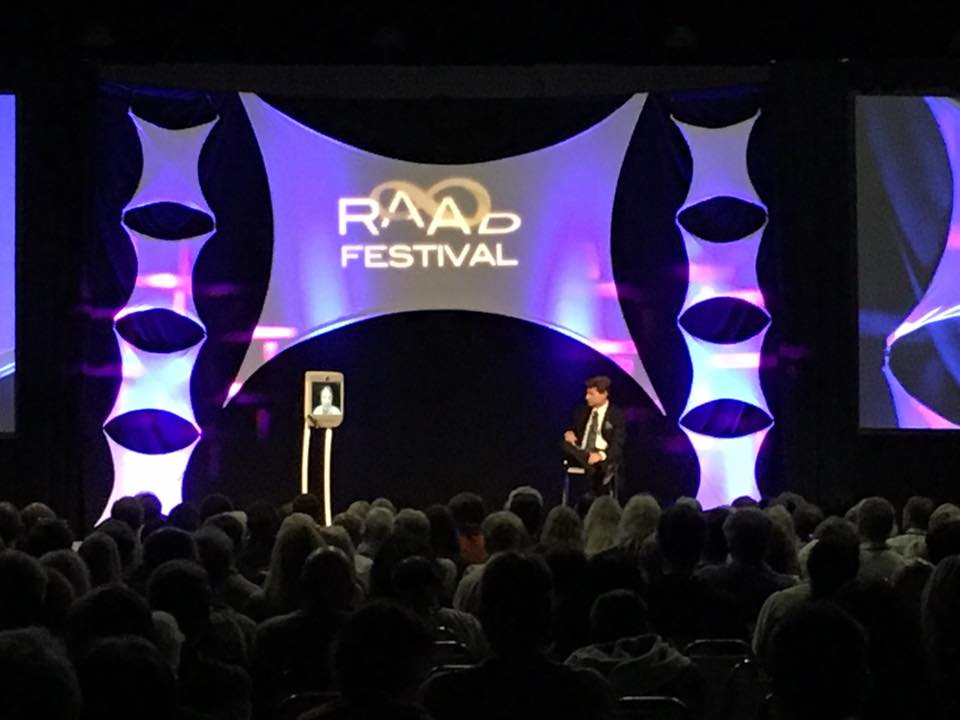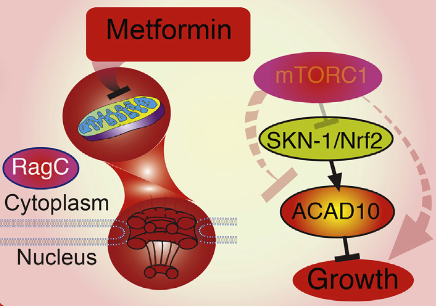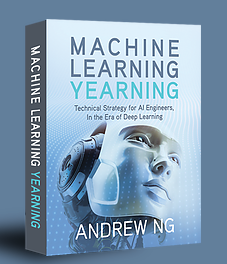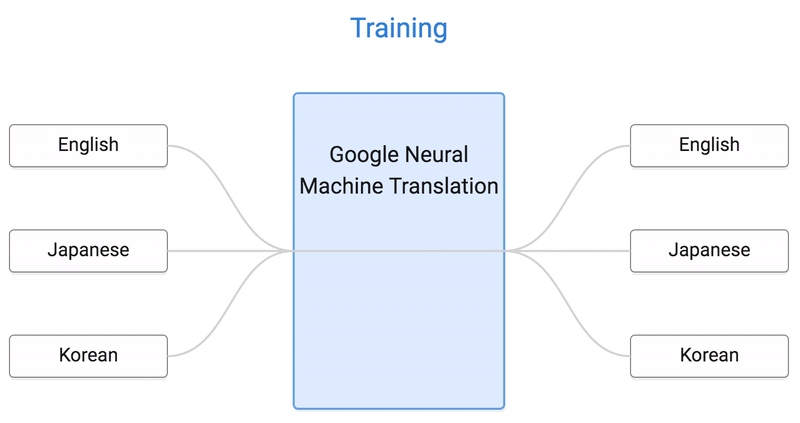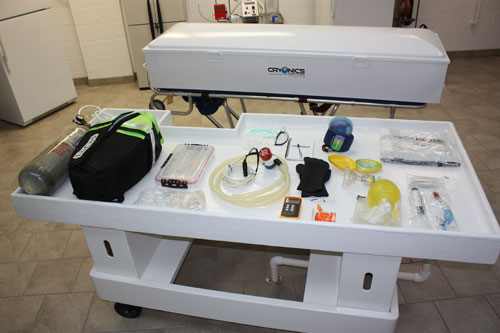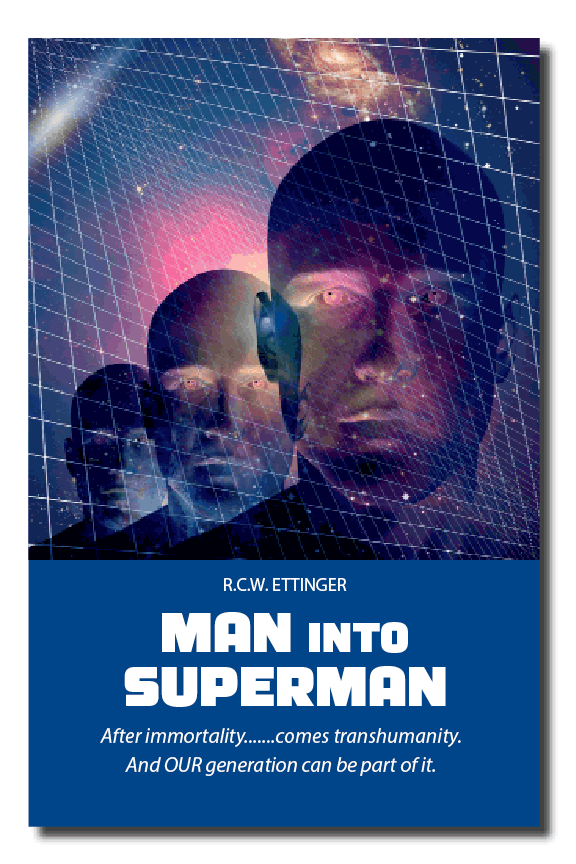Now we must wrestle with our consciences, and win. The emphasis must now shift from superhumanity to immortality, from the third person to the first and second, from motivations to values and from aspirations to ethics. In particular, we must try to clarify the conflict between immortalism and traditional morality.
There is indeed, I think, such a conflict, on at least two levels. First, life extension will bring important practical changes in the effects of policies and actions; what may be “good” for a mortal may be “bad” for an immortal, because of altered perspectives and other changes. A few examples are offered.
Second, the very criteria of “good” and “bad” will change, especially in the related issues of selfishness vs. altruism, self-preservation vs. self-sacrifice, solitude vs. community, expediency vs. loyalty, pragmatism vs. principle, and growth vs. stability. The immortal superman, I believe--yourself and myself, day after tomorrow-will shift the balance substantially toward the first of each of these pairs, although with important qualifications. And again I hope to convey a feeling that these shifts are not only probable but desirable, that after the wrenching changes our position will be more comfortable as well as more logical, that the gains will far outweigh the losses. But we must begin with some emphatic disclaimers.
The Need for Relatively Stable Values
It must not be imagined that there is much connection between immortalist morality and the “ethical relativism” or “situation ethics” currently popular in some quarters, or that immortalist morality is reflected in the decadent lifestyles of some self-proclaimed avantgarde elements. The resemblances are superficial and the differences profound, as we shall gradually see.
Circumstances do indeed alter cases, and scarcely anyone now denies that cultural and individual differences bear on one’s value system. But a sudden liberation from traditional values can have the same effect as “liberation” from a safety belt in a racing car. It is astonishing how few people understand the real rationale behind the rules against cheating and stealing, or the chief danger that premarital sex poses for most girls in contemporary society. I have never had a student give the answer which I believe is valid to either of these questions-viz., that these activities tend to corrode the personality and self-image
To be sure, the notion of “natural law” is fuzzy and dubious, especially in the grotesque exaggerations of an Aquinas. Aristotle was not exactly on target in saying, 11 every ideal has a natural basis, and everything natural has an ideal development.” Kant’s “categorical imperative” has not been shown to exist. But men have enough in common, and psychology is sufficiently advanced, to make it clear that values cannot be tampered with lightly.
Maslow says, “The human being needs a framework of values, a philosophy of life, a religion or religion surrogate to live by and understand by, in about the same sense that he needs sunlight, calcium, or love.... The value illnesses which result from valuelessness are called variously anhedonia, anomie, apathy, amorality, hopelessness, cynicism, etc., and can become somatic illness as well. . . .”
Weinberg writes, 1” there is perhaps no more successful way of living than by carefully defining a value system, examining it from time to time, and upholding it. Among its numerous advantages, a code of ethics provides us with exemption from too great a dependence on other people’s opinions of us.... Being stable would seem almost a requisite for mental health.... Whenever we undertake to change our personality, we must make ourselves unstable for a time. The disequilibrium we experience as anxiety.
With these warnings soberly in mind, we must nevertheless prepare for change.
Some Effects of Longevity and Perspective
Some of the changes to be wrought by extended life and controlled personality are fairly easy to guess and to accept; let us tick. off a few, both general and specific:
(1) Misbehavior due to weakness and stupidity will decline sharply, as we become less weak and stupid. Many affronts to society, and to oneself, are simple misjudgements or failure to take the long view. Crimes of impulse, rudeness, drug abuse, berserker syndromes, acts of desperation, shortend risks, naive greed-all these should dwindle to a trickle when we are nearly all longlived, informed, capable, and in control of our personalities.
(2) The Golden Rule should work much better for immortals than for humans, even as a mere tactic of expediency. Erich Fromm, although he seems to have fallen into the humanist trap about which we shall speak later, has written: “If the individual lived five hundred or one thousand years, this clash (between his interests and those of society) might not exist or at least might be considerably reduced. He then might live and harvest with joy what he sowed in sorrow; the suffering of one historical period which will bear fruit in the next one could bear fruit for him too.”16
(3) Greater self-confidence and control of personality implies we should be less thinskinned, leading, among other things, to more gracious giving and receiving. Aristotle considered it a mark of superiority to confer a kindness, and a mark of subordination to receive one; contemporary proverbs recount the resentment of the debtor for his benefactor; and today’s militant minorities fiercely reject what is “given,” prizing only what they can seize for themselves. All this touchiness is clearly neurotic and to be outgrown.
(4) Notions of dignity and honor, for the same reason, should become much more elastic in some respects. In Athens, a gentleman had to look and sound the part-sedate carriage, deep voice (!), measured speech, narrow norms of dress, etc. In certain circles of postmedieval Europe, a sidewise glance might be a deadly insult, to be avenged on the field of honor; the same thing is said to be true among some of today’s motorcycle gangs. We are not likely to lose our need for formal courtesy, nor our sensitivity to insults but our reactions should be under much better control, responding only to real threats, our egos being very bard to bruise.
(5) Tolerance of diversity, of individual idiosyncrasy and cultural pluralism, may increase while remaining responsible. (Much “tolerance” heretofore has just been a closing of the eyes and rejection of responsibility.) There is likely to be a strong tendency to live and let live, when psychopaths and neurotics are few.
(6) When we are immensely wealthy in material and inner resources, we should have greatly reduced need for outside help, encouragement, flattery, approval, or almost any kind of interaction; there may be many solitaries and a highly fragmented, loosely-knit society. This may lead, during a certain period of history, to a devaluation of some elements of morality. We may not exactly wash our hands of other people’s troubles, nor refuse in all circumstances to be our brother’s keeper, but ‘May still tend to go our own ways, assuming the other fellow can take care of himself.
(7) Yet under some conditions there also exists the possibility of a much higher sense of community and greater esprit de corps. Paul T. Young has discussed morale in military forces, saying, “The impersonal threat of injury from the enemy, affecting all alike, produces such a high degree of cohesion throughout the unit that personal attachments become intensified.””’ Superhumans could deliberately create moral values analogous to this, with nature in the role of the “impersonal threat”, our broader perceptions and longer attention span allowing a lively and permanent sense of our beleaguered position a tiny speck of struggling consciousness, banded together against the cold and careless cosmos. This would not be a “brotherhood of man” in any syrupy sense, but a sober sense of duty born of practical necessity.
(8) There will almost certainly be a much higher price on human (or transhuman) life, for reasons obvious and otherwise. In certain kinds of industrial and construction work, costs may rise tremendously for a while because we will no longer tolerate the fatal accidents that always accompany current construction methods. We may accept great inconvenience in traffic for the sake of slightly greater safety. And a heightened sense of human dignity is almost certain to rule out prison or physical punishment for any purely financial or technical offense. (In current circumstances, however, talk of “human rights” vs. “property rights” can be very misleading.)
(9) Individual freedom may gradually come close to anarchy-and when freedom is abridged, the limits will be clearly recognized. (Is there anything more exasperating than the smug asseveration that service to God, or service to the state, is the “real freedom”? Submission may or may not be better than freedom, and one kind of freedom may or may not be consonant with another; but to say that submission is freedom is a mockery of language.) The freedom or “license” of one is not likely to be dangerous to others, because families should have ample resources to protect themselves against intrusion and their children against undesired conditioning. Freedom as a “moral” value is likely to be more exalted than it is now.
But now it is time to take a more systematic look at basic questions.
Classic Moral Philosophy
There are only two choices of basic moral guideline-to serve the whole self, or to serve society. (Erich Fromm’s third criterion, that 11 revealed or postulated,” is even less distinct.) Writing in the context of humanity and mortality, the classic philosophers have leaned heavily toward society.
A few have taken a bold stance for selfinterest, but the results, as in Epicureanism, have almost always been embarrassingly naive; the hog at the trough is no one’s ideal. Nietzsche exalted pride over humility, but in the end nevertheless sacrificed the individual to a neurotic idealism. (He had some unusually forward looking ideas, however, on the relation of biology and chemistry to temperament, speculating that the Asiatic outlook might derive from rice and the German from beer.) Spinoza purports to “prove,” through logic, that self-preservation is man’s primary motivation, but from this naive beginning be proceeds to the conclusion that supermen will free themselves from the individualism of the instincts and “desire nothing for themselves which they do not also desire for the rest of mankind. “ 160
Most of the others came down heavily for the herd, often making explicit such principles as “The greatest good for the greatest number” or “Do as you would wish others to do.” Immanuel Kant said, “We know ... by vivid and immediate feelings, that we must avoid behavior which, if adopted by all men, would render social life impossible.... Morality is not properly the doctrine how we may make ourselves happy, but how we may make ourselves worthy of happiness.” Plato said that morality is the effective harmony of the whole, that all moral conceptions revolve about the good of the whole. Thousands of years later John Dewey, the “modern,” the “humanist,” was still saying morality is in community and acknowledging that in this community we seek a kind of immortality. The ecclesiastics offered essentially similar views, shored up by theology and tortured logic, culminating in the amazing St. Thomas Aquinas, who tamed logic to “prove” such propositions as the immortality of the soul and to investigate such questions as “whether one angel moves another angel’s will.”
There have been occasional oases in these deserts of thought, however-notably in William James, who emphasized pragmatism-”hanging loose”-and the value of the individual; be reminded us that the state is the trustee and servant of the interests of individuals, and promoted a philosophy that shall “offer the universe as an adventure rather than a scheme.”” But these ideas must be elaborated considerably to be appreciated, both as to background and the new context.
The Natural History of Idealism
The idealist is about to become extinct, I believe, because the lies be lives by are no longer useful. The human race has always been psychotic, but now it is time to go sane and face reality. Being stripped of our delusions may be a little less painful if we are more clearly aware of their origins.
Until very recent times, dedication to a principle or cause was nearly essential both to society and the individual. Society required certain loyalties, even unto death, for military and disciplinary reasons; the individual needed just as much to commit himself, for a sense of worth and purpose in a world otherwise seemingly bare of both. (Our young, especially in changing times, have always been hollow with selfdoubt, pathetically anxious for “identity” and eager to latch on to any apparent mooring; when old flags become too obviously threadbare, there is a desperate search for new ones.)
Among the lower animals the evolutionary necessity or value of certain types of behavior is obvious. The spider lays thousands of eggs, and some will mature without protection: in fact, about the same number would probably survive with or without parental protection. Hence parental devotion has no particular value to the species, and is unknown.
With birds, the case is different: the small number and early helplessness of the young means that parental devotion is indispensable for survival of the race. The mommy and daddy birds may or may not benefit from their protective feelings. If they could think about it, they would probably feel their attitude is “good” and “right,” and would have only contempt for the selfish and uncaring spiders. (And the birds would have very reasonable explanations for their habit of forgetting the young beyond nestling age.)
Even higher orders of devotion are exhibited by some birds; in certain species, the individual who observes a fox may scream a warning to the flock, even though this draws attention to himself and reduces his chances to survive. His loyalty tends to improve the chances of the flock as a whole, including his own offspring; hence the trait is perpetuated.
What avian odes might be warbled and screeched about the plumed paladins of copse and cove!
Astronomer Fred Hoyle has remarked how the flower of civilization grows from a swamp. Imagine, if you can, the billions and trillions of lesser creatures, our subhuman predecessors, who lived in misery and died in agony that they might, bit by bit, blindly and unconsentingly, build to a higher species. The “shriek in the jungle,” multiplied a trillionfold, reverberates down the bloody tunnels of time. Imagine the thousands of generations of our human ancestors who walked the tightrope between cave and grave, maintaining always the necessary precarious balance between selfpreservation and selfsacrifice. We can think of them with respect, and gratitude, but also with pity, and we can consider following a sharply divergent path-if our body chemistry will stand it. Of this, more later.
In the past, our actions had to pass several survival tests-for individuals, for families, for societies, for institutions. Those patterns of action, and hence those patterns of thought and feeling underlying the actions, tend to be perpetuated which favor survival and dissemination. Yet, it is apt to give us a very queer sensation to turn it around and reflect that, in effect, we were forced to think the way we do by a blind bookkeeper; many of our most important feelings and decisions arise not out of nobility, not even out of reason, but merely out of obedience to evolutionary laws of cause and effect.
Devotion to our children is a nearly universal trait among mankind. Yet rationalize it or idealize it bow we will, it arose as an evolutionary adaptation; just so coldly unromantic is its basis. We are no better than the spiders, only perhaps unluckier in that the fewness and puniness of our offspring severely restrict our freedom of action. Are we better than the birds and bears, because these turn their children out when they can fend for themselves, and there-after know them not? In fact, it is believed that in early human or prehuman societies the sons would kill the fathers, or the fathers drive out the sons, when the boys neared maturity; but the preservation of acquired wisdom, and the stability of clans, have survival value for the species able to deal in these complexities, and so our habits developed to a “higher” order. (Among royalty, however, the old habits frequently recurred.)
Why do we defend our homes and countries? Sometimes, of course, such defense is appropriate to preservation of self and family and property, and seems quite rational. But we may be just as vigorous in defense even when survival and well-being might seem better served by other actions; in particular, there might seem little logic in an individual accepting risk in a modern war-is not malingering often more reasonable? Clearly, a degree of idealism, of loyalty to causes and totems, has played a part in helping tribes survive and prevail; thus we are born with these loyalties, or the tendency to them, in blood and bone. (Many of our Vietniks were stayed from service, not by selfishness, but by a competing ideal.)
Robert Ardrey has written a whole book (The Territorial Imperative) on the thesis that man is a territorial animal, like many other species, and that he defends his stake instinctually-he just can’t help it, and reason makes no difference.’ Ardrey’s ideas, although similar to some of Konrad Lorenz, have not been particularly well received by anthropologists, and the impulse to defend territory may not rest on a full-fledged biological compulsion, but on a biological predilection developed by culture. What does it matter? Whether it is narrowly the species preserving itself, or the society, or institution, is not the individual just as much a pawn?
Consider the soldier who falls on a hand grenade to save his comrades, or the mother who gives the last bit of bread to the children, or the priest who accepts celibacy for life, or (on another level?) the woman undressed in a burning building who perishes there rather than run naked into the street. Are all of these serving noble and reasonable ends, or are some of them victims of poorly understood habits and social pressures misconstrued as ideals? Are they being sacrificed to a mindless machine-species, or state, or church, or culture-which has developed its own imsensate but relentless techniques of survival?
Most of us will defend and admire the mother, and refuse to put her in the same category as the woman who feared embarrassment more than death. Americans will tend to respect and defend the priest-but Russians will think him deluded; and Americans will be inclined to rationalize the soldier’s sacrifice only if he is an American or allied soldier, a gook being not a hero but a deluded fanatic.
One may ask, what does it matter the origin of our ideals, what does it matter the biological basis of our motivation? Are we not, in any event, stuck with them, and should we not, not, therefore, make the best and most of them? Whatever it was that made us men, are we not now committed to humanity?
The answer is negative: first, because our “humanity” consists of warring elements which cannot be reconciled; consists of warring elements which cannot be reconciled, second, because times have changed, the old balances are out of kilter, and even the biological basis of our humanity will soon be a question of policy and deliberate change.
The Secular Religions
The flakiest forms of the traditional insanity-idealism-are seen in Eastern Communism and Western humanism, which are the principal secular religions. (A “religion” seems to be characterized mainly by dedication and fellowship, with a divinity and formal worship not essential.) These represent extremes of idealistic behavior which reveal the full degree of the aberration.
The Communist, and the humanist, may be thought “nobler” than the Christian or Moslem (i.e., crazier) because they make their sacrifices without hope of personal reward in any afterlife; they labor, and if need be suffer, merely for the “holy joy of doing good” for the community, or for posterity. The very purity of this dedication reveals its absurdity.
They seldom ask why the state, or posterity, is so important. If they did, the only reasonable answers would be inadequate: the state has some importance because of its interaction with the individual and support of him; posterity has some importance because we are interested in the welfare of our grandchildren. But the Communist and humanist attach unquestioning and overriding importance to the state, or posterity, in their most extreme and sterile concepts, just for the mystic delusion of merging with the universal. An ideal of this kind represents a sanctuary, a haven from certain unpleasant thoughts and unwelcome responsibilities. It offers psychic safety, secure mooring, an apparently honorable place in some grand scheme.
In the context of modem dynamism and the new biology, the “noble sentiments” of the idealist become maudlin sentimentality. In the perspective of cultural and biological history, even the noblest sacrifice or grandest achievement is a drop in the tide, a snowflake in the storm, soon irrelevant and sooner forgotten. Institutions change and perish: will you lay down your life for a possible footnote in future histories, perhaps a derogatory one at that? The very genetic character of man will be transformed. Can you imagine that the supermen of the future (if you are not among them) will remember you clearly or gratefully, any more than we honor our simian and piscine predecessors? And even if they will, would that butter any parsnips?
These observations may be reminiscent of the tired views of cynics and hedonists, and it may seem that the answers of the traditional moralists apply. One such answer is that the cynic’s argument, carried to its logical conclusion, strips life of all meaning and savor; that every loyalty becomes equally meaningless and arbitrary. Another answer, or perhaps a different form of the same answer, is that experience proves the sense of reverence is fundamental in man and requisite for mental health. But in fact, the new questions are not the same as the old questions, and the old answers have not retained their force, as I shall attempt gradually to show.
The Formal Religions
It will be helpful also to consider those sects with the full trappings of religion, including rituals and prayer. It has often been argued that such are essential for the full flowering of civilization; but it seems to me they lack any unique claim, and represent merely another example of idealism.
The social argument for church-sponsored morality has been summarized by Will Durant: “The Church believed that these natural or secular sources of morality could not suffice.... A moral code bitterly uncongenial to the flesh must bear the seal of a supernatural origin if it is to be obeyed . . . in the most secret moments and coverts of life .”41 Probably most ministers today maintain this belief, especially in the face of the challenges of “Godless Communism” and “decadent relativism.”
But it is by no means clear that religious people in the United States are better behaved than irreligious ones-and if it were somehow found to be true, it would still be hard to separate cause from effect. Nor does it appear that standards of personal behavior are lower in atheistic countries; the Chinese, for example, seem just as decent as the Filipinos or Americans. In fact, one could make a case for the superiority of the Communist over the Christian, since the latter requires the carrot and stick of Heaven and Hell to make him behave. That the Communist so seldom cheats in favor of his own selfish interests is a tribute both to his character and his ideology; that the Christian so often sins, despite the dazzling promise and the blood-curdling threat, makes him all the more an object of contempt; or so a cynic might say. Furthermore, the cynic might add that the emphasis on faith rather than works for salvation tends to invite hypocrisy, the eyes raised to Heaven while the feet dance in filth.
Of course, such a cynic would be wrong-but why? One reason, paradoxically, is that the bulk of the faithful are not really all that Christian. They have frequent theological doubts, if they think about it at all; Heaven and Hell remain dim and distant; the actual, functional determinants of behavior are largely the same for them as for unbelievers, namely habit and social pressure, with an occasional flash of reason or impulse. As for those who have received the Christian vision in its full intensity (probably very few), they obviously are not just celestial bribe-takers; they are consumed by love of God (whatever they mean by that) and man (which is almost as unclear), and while they glory in their expected reward, they would serve just as whole-heartedly without it, or with a less explicit prize. After all, large numbers of Jews, and adherents of other religions as well, did and do travel what they conceive to be the high road for no reason other than to keep their feet out of the muck.
The main faults of the major denominations, it seems to me, are simply those they share with all ideals and utopias, which may be deceptive and baneful in several respects. First, they amputate abstractions from their roots in the individual and then invest the abstractions, rather than the individuals, with fundamental importance; put another way, they bloat the importance of a few (probably temporary) aspects of the individual’s psyche at the expense of the rest, and even at the expense of his existence. Second, any vision of perfection or finality entertained by such lowly savages as we is nearly certain, in the perspective of history, to be a ridiculous and diminutive illusion. Third, the utopias have in practice been mostly of a dreary, negative character, concerned with nothing more imaginative than the elimination of sin or of what the Maoists would call “incorrect behavior.” If we embrace these ideals we may remain lulled, and cozened, engrossed in our fumbling little games, even ascribing nobility and ultimate virtue to them, while all undiscovered the great world and limitless life are waiting.
The Quasi-Religions
There are many causes or ideals that rank lower than the formal religions and the major secular religions, but still have sufficient elements of dedication and fellowship to be characterized as quasireligions; among these at present might be included, say the civil rights movement, the states’ rights movement, feminism, and assorted varieties of nationalism. Since the taboos here are not quite as rigid, and since examples each with relatively few adherents can be found, we may be able to see more clearly the features of irrationality and counter-productivity. Today in America this is especially easy in connection with youth and the civil rights movement.
The saving grace of militant youth, according to the pundits, is its “idealism,” which tends (they imply) to redeem and excuse obstructive and even destructive behavior, and which could be channelled into useful efforts. But it seems to me, once more, that idealism or quasi-religion of the kind that creates martyrs is basically insane and vicious, and that educators should aim not to harness it, but to eradicate it.
Certainly idealists have contributed much to the world, and when they do good we speak of “devotion” rather than 11 obsession.” But a crusading Hitler or Torquemada would be seen from outside as at best a zealot, and more likely a fanatic. On the whole, idealists have probably done much more harm than good in the world, both to themselves and others, and the conditions of today and tomorrow particularly call for sober judgment and flexible attitudes, rather than ringing rhetoric and eternal principles.
Can an excess of virtue be a vice? Words are tricky, and differences are usually quantitative. There may not be much sky between “fanaticism” and “enthusiasm;” and one can, if be wishes, speak even of doubt and pragmatism as “ideals.” (When we are supermen, our language will be more precise.) But the kind of idealism that creates martyrs is often easy to recognize, and its logic is as crooked as its effects are pernicious.
As an extreme example, consider the two young white men, Schwerner and Goodman, who were murdered in Mississippi while participating in a Negro civil rights campaign. Although those demonstrations were largely orderly and law-abiding, still the risk was substantial. Why were these young men willing to risk the supreme sacrifice?
Cruel as it may seem to say so, I think their motives were largely neurotic. Unsure of their own worth and purpose, they sought assurance and fulfillment through attachment to a Cause. The grandeur of the Cause, they probably felt, would lend dignity and value to their own lives-irrespective of the outcome of their efforts.
This is the insidious lure of any crusade: it is failure-proof. The valiant idealist need not win, and seldom even expects to prevail. Failure is easily excused, since (1) he is fighting an uphill battle against enormous forces of evil, and (2) victory for the Cause in the long run is assured, and be has made his contribution. Even to die is not to fail, but to become a martyr whose memory will inspire others, so that the fallen hero “lives on.”
Does this mean that everyone who battles against odds for a principle is really copping out? Of course not. In the case of some-especially the leaders-there may be a shrewd assessment of opportunities, including personal benefit. (Most of the spokesmen for the oppressed do pretty well for themselves, in one coin or another.) Even for the humble spear-carrier, there may be an emotional history that absolutely demands this kind of commitment. But what may have been compelling for a Malcolm X is not impressive for a Schwerner or Goodman; they had better choices, tinder just slightly different conditions and so do most of us.
Needless to say, the more obvious kind of copout is not restricted to racial minorities, nor to political liberals, but it is found most frequently among the young, who tend to value themselves too little and the world too much. There used to be a saying in Europe: “He who at twenty is not a Socialist has no heart, and he who at forty is still a Socialist has no brains.” Traditionally, the young have had to learn, in the school of hard knocks, that providing for a family is both more important and more difficult than “saving the world.”
A final word may be in order about the possible standing of cryonics itself is an “ideal;” I have been explicitly challenged on that score, and asked whether I would not sacrifice myself for this cause. The answer is no: I am interested only secondarily in saving my generation, and primarily in saving my own family and friends and myself, not necessarily in that order.
The Morality of Self-Interest
Even if we have succeeded in showing that the morality of community is empty and delusory, it does not necessarily follow that the morality of self-interest is valid, or even that the latter term has any proper meaning. We had better dot some is and cross some t’s.
We note that the doctrine of enlightened self-interest is well known, but seldom effectively applied or even made sufficiently explicit. As remarked elsewhere, everyone is always motivated by self-interest in the most direct sense; that is, we act as we do to please ourselves, or to please some aspect of ourselves (even if only to avoid a worse alternative). This is true even of unconsciously motivated behavior and of self-destructive behavior. Our errors lie in misjudging the effects of our actions, on the world and on ourselves, in comparison with the alternatives, and especially in failing to realize that our criteria of value change and can be changed.
There is nothing new, startling, or shocking in advocating selfishness, if it is viewed in this light. At the risk of some confusion, I can change the terminology and say the same thing with less offensiveness: obey your conscience, and train your conscience. The confusion here arises because “conscience” has come to have connotations of altruism, when really there is no such thing as altruism in any private sense; there are only various facets of one’s personality, and more or less effective ways to satisfy their respective needs.
What some of these ways are, and how they may change, shall be touched upon presently, but there are immediate objections to be answered. For example, if every choice is properly only an exercise in mathematical decision theory, an attempt to maximize happiness, then does the word “morality” retain any meaning, beyond that of efficiency? I think there are two useful and appropriate applications of the word “morality.” First, one distinguishes between short and long-term interests, between temptations and duties to oneself; morality lies in resisting the temptation to betray one’s greater good, Second, one can continue to associate morality with intuitive ideas of “fairness ... .. justice,” “right,” and the other normative notions, while reminding ourselves that these are only working hypotheses subject to change. (And perhaps these normative ideas will include aesthetics, so that bad art or bad taste will be a form of immorality.)
There are also problems with our view of “idealism” and its origins. Does not life require convictions and enthusiasms, which could be called principles and ideals? And can these not have valid sources in our enlightened consciousness? Once more, the crucial questions are quantitative, situational, and personal. One will buy principles and ideals now and then, but his portfolio should be balanced, not over-invested in any one ideal; there should be a substantial casli reserve and frequent review; and of course, the ideals in which he invests must be suited to himself, not to any other person, natural or corporate. “Idealist” can remain a respectable word only if its meaning is watered down and its connotations cleaned up. Moral ideals must not be associated with finality or perfection; they should be hypotheses subject to continuing reappraisal. With long life, this is feasible.
A Program for Reevaluation
The actual prescription for continuing moral reevaluation is not difficult to give in sufficiently broad terms. In reviewing our value system, we use three partly overlapping criteria: selfinterest, internal consistency, and flexibility or allowance for growth. In contemplating a particular course of action three things need be considered: how it fits our current value system; how it may tend to change our values; and the respective weights of promise and risk-with an especially hard look at possibly irreversible changes.
In different words, once more: obey your conscience, and train your conscience. We want maximum growth, but a carefully controlled growth slow enough to keep one’s emotional and moral identity reasonably stable and well structured at any given time. A sudden, bard blow might shatter the personality; but a steady push in the right direction may get us where we want to go, if we can figure out where that is.
More specifically, most of us probably need to reduce our institutional loyalties-a suggestion that will infuriate and confuse many.
Remember John F. Kennedy? “Ask not what your country can do for you; ask rather what you can do for your country.” This solemn reversal of priorities is actually accepted, in varying degree, by allegedly sane people in a nontotalitarian country. What a cancerous overgrowth of the need for esteem and approval! The sane (selfish) person will always subordinate his country’s interests to his own, or his family’s, whenever there is a clear-cut choice; but we must emphasize that, in practice, the feedbacks are complex and the choice seldom clear-cut.
We emphasize also that the recent deterioration of patriotism and national unity does not represent an anticipation of the recommendations outlined here. This deterioration does not represent valid efforts to improve value systems, but merely the substitution of different totems for the flag, or else a simple disintegration. There have been many periods in history when one set of false values decayed, to be replaced by another set equally fraudulent. Despite some superficial resemblances, immortalist morality has made only a tiny, nearly invisible beginning.
What about those too brittle, still too committed to “universals,” to entertain the notion of “betraying” one’s country? If he is capable of recognizing the validity of self interest on an intellectual basis, then he may gradually bring his emotions and conditioning under control with an oblique approach, by first abjuring loyalty to less-important institutions, such as organized charity. For example, if be has been buying Care packages for an Asian country, he might quit, as a little light exercise in applied selfishness, softening up his conscience for remolding. But this suggestion, again, has important qualifications.
Force-feeding our sense of selfinterest need not necessarily wait until we are superhuman, but the external and internal results of such meddling are bard to predict. For an amateur to attempt to adjust his own psyche is a little like trying to perform brain surgery on oneself with a mirror and a hacksaw. It is a little like that; yet nearly all of us desperately need to change, and I for one intend to keep whittling on my tumors.
Despite the repeated qualifications and disclaimers, some will still think we are advocating a simplistic, hoggish-type of selfishness, and that we are ready to forego all the warmth and support of human community and loyalties. Not so. Man-let alone superman-operates on several levels and can learn to shift gears rather easily. The woman who enjoys operating complex machinery can still also enjoy a simple stroll; the most sophisticated adult can on occasion delight in childish horseplay and atrocious puns; a cynical San Franciscan can watch a band of itinerant mercenaries and still take pride in “his” Giants when they win a game; and we all know how to bask in the reflected glory of distant relatives and remote ancestors, while quietly disassociating ourselves from their failures and crimes. So it goes; there is nothing wrong with a little double think, so long as everyone understands the game. When community serves, enjoy it; when it gets in the way, stomp on it. Just don’t be sneaky about it, because then you will probably be disliked by everyone, including yourself.
To recapitulate and summarize, I envision the following protocol for a person of reasonably normal and stable personality. First, one makes his world-view as explicit as possible, and examines as carefully as he can the structure of his personality. In so doing, he will find certain elements of inconsistency or conflict; typically, he will discover himself the victim of institutional conditioning, with disproportionate emphasis on the altruistic and communal aspects of his conscience. (But some will find they have not given enough attention or respect to the traditional wisdom.) He will then-gingerly and gently, with frequent critical review-attempt to modify his emphases, or the shape of his conscience, probably in the direction of reduced altruism and a more carefully calculated selfinterest.
Whether we can really climb this spiral staircase, whether, in the long run, this growth-and-feedback process will prove viable in a community, or even in an individual remains to be seen. The enormously hopeful factor, the gloriously novel element, lies in the prospect of immortality and transhumanity, which provides the elbow room and motivation which have never been present in all the ages of man, until now.
Priorities of Loyalties
To get down to cases, my examples so far having been few and well-hedged, just how should we allocate loyalties, and how far should they extend?
As a first approximation, loyalty attaches primarily to those people, principles, and institutions closest and most important to us. Crude and obscure as this rule may be, I think we can get some mileage out of it.
Casual application of this principle would seem to tell us that the people claiming our loyalties, in descending order of priority, are oneself, immediate relatives and close friends, more distant relatives and friends, fellow citizens, and finally foreigners; and our actions and feelings often do acknowledge this sequence-charity begins at home and all that. Most of us would and do go to much more trouble to save inconvenience for a friend than to save the life of a starving Pakistani; and I think this attitude is correct-it simply isn’t feasible at this time, for most of us, to worry over much about those mountains of misery in distant places.
But intuition is by no means a reliable guide. A trivial and well-known example is that of the husband who berates his wife just because she has slightly embarrassed him, through some gaucherie, in front of a waiter or clerk or other stranger. Of course, he is not subordinating her to the waiter, but either (1) to his own vanity, or (2) to an unmanageable sense of propriety; but he can still redeem the situation and avoid recurrences by reminding himself that his wife is very close to the inmost circle. Similar remarks can be made about those (very many) who habitually are more polite and considerate to strangers than to their own families.
This crude rule of thumb-a kind of psychological inverse square law-has other easy applications as well, for those reasonably stable and self-confident. One does not ordinarily accept dares, play “chicken,” or volunteer for hazardous duty. A young woman does not forego marriage to care for her invalid mother. Parents support their children against the community, and even against the law, if that appears truly in the children’s best interests. When misbehavior and alienation reach a certain point, parents may disown their children.
Remember we said the conclusions above would be drawn by someone who recognizes our priorities, and who is “reasonably stable and self-confident.” Some parents would refuse, say, to help a son convicted of manslaughter to escape to South America; usually this would show, I think, that they were unduly under the influence of social conditioning. But this is not the only possible interpretation; perhaps social sanctions, rightly or wrongly, are near the core of the parents’ personalities, and the son is estranged, so their refusal to help him is properly selfish and correctly calculated, at least for the short term.
Let no one be misled by hypothetical questions involving physical risk and emergency situations. Most of us would risk our lives to save someone near and dear in a crisis, and this is possibly correct and necessary for a long time to come, for selfrespect and mutual esteem; but there are some very relevant things easily forgotten. For one thing, in the conditions of modern life, the question of physical self-sacrifice or even risk seldom arises. (Children sometimes agonize over hypothetical questions of this type: “If Mom, Dad, and Sister were drowning, whom would I save first?” “If I were a prisoner of the Viet Cong, would I let them cut off my testicles rather than give military information?” And so on.) In the hard practicalities of everyday life, there are indeed limits on the sacrifices we will make for those near us. Friendships are sometimes more cherished and valued than family relationships, even though there is no question of loyalty “unto death.” Those who are cowardly or timid may still be capable of giving and receiving love. And those who imagine their near ones are indissolubly bound to them are living in a fool’s paradise; have they never heard of divorce?
Superman will doubtless prize himself and his potential above everyone and everything else; but this does not mean he will be a cunning, slavering hyena, treacherous and cannibalistic, or that such a future will be cold or cruel or lonely. Our skills may grow in subjective value, but not to infinity, for obvious reasons; our courage, when we reach transhuman estate, can be expected to overtower current standards, but to serve the more fully selfconscious self, not quaint or grotesque totems.
At present, we typically give blind allegiance to various ideals-yet often the quality of our service is not high. The traditional American was a strong patriot, but lie did not always treat his neighbors well. In the future we can expect coolly to limit our allegiances, but to imbue them with vastly more value, the casual friendship of a superman being warmer and more useful than the blood oath of a human. if everyone understands exactly how far a given loyalty extends, and does not expect more, there can be no betrayal.
Each of us must be capable of standing, in the end, alone, if need be. But such a grim necessity should be a far, far more remote contingency among us as supermen than it is today.

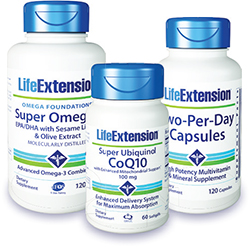

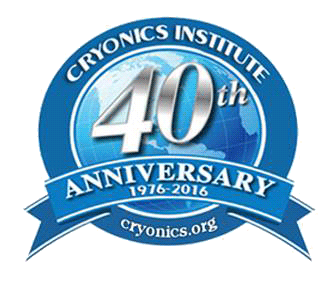



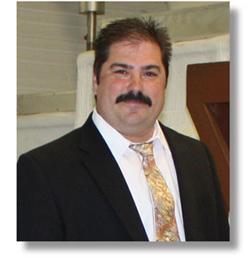
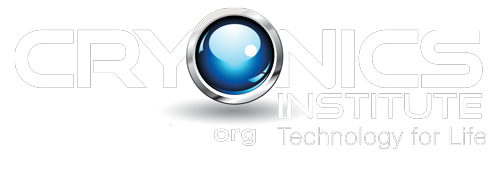
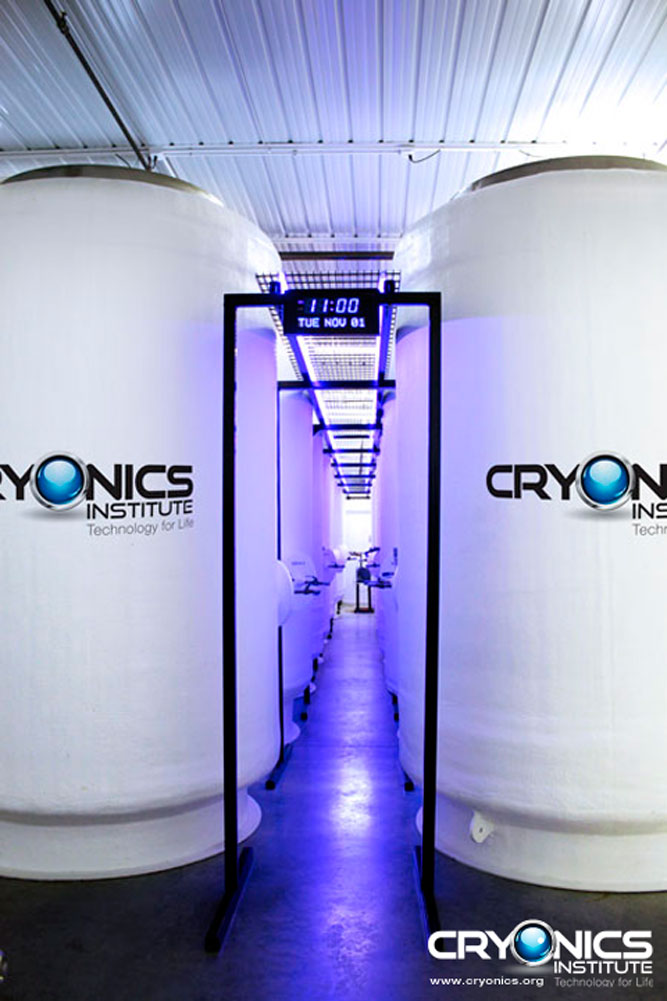
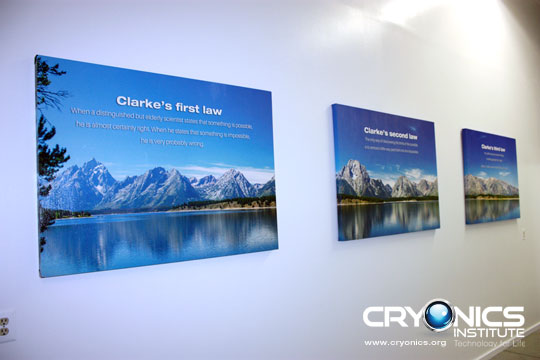
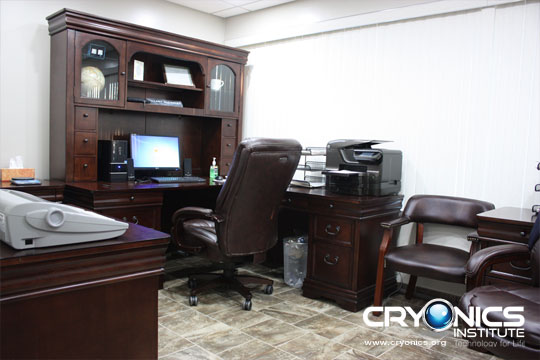
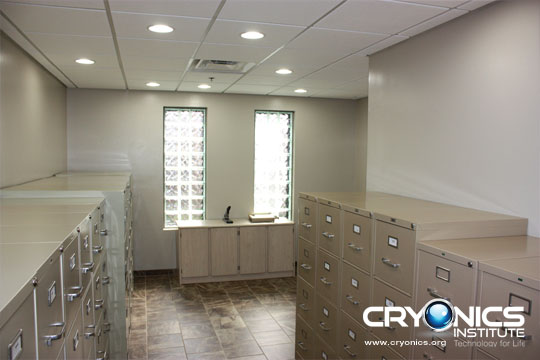
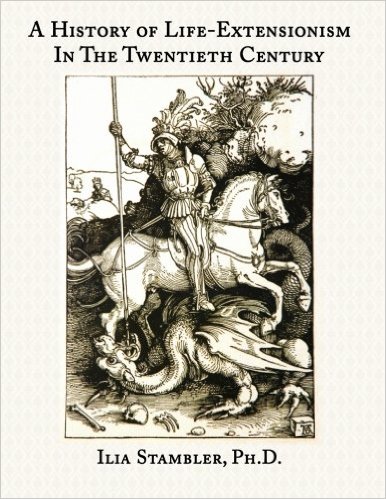
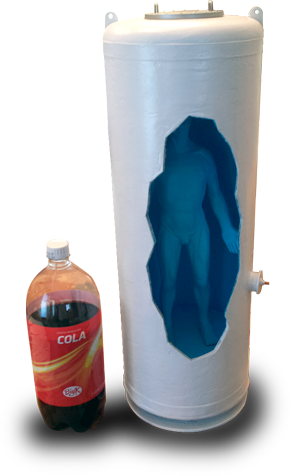

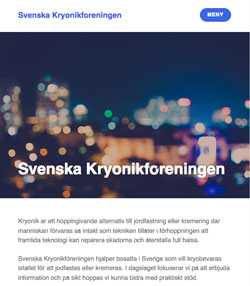
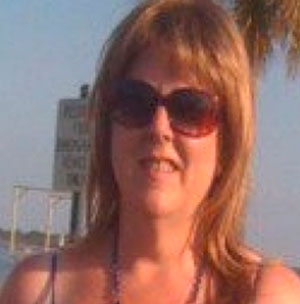
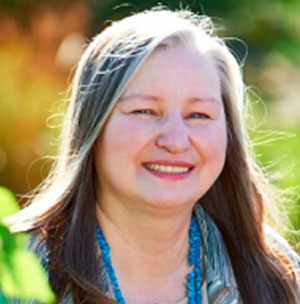
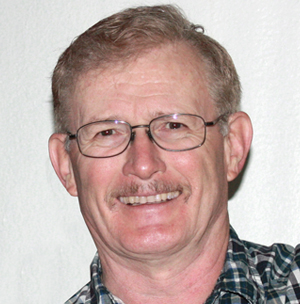
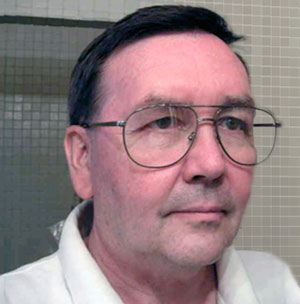
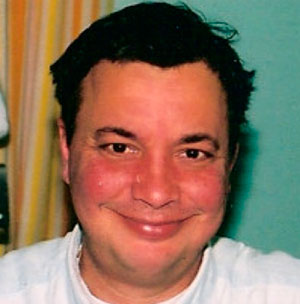
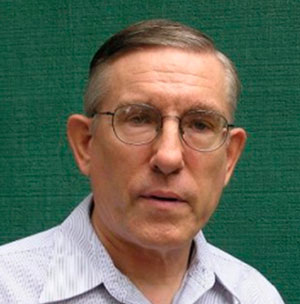
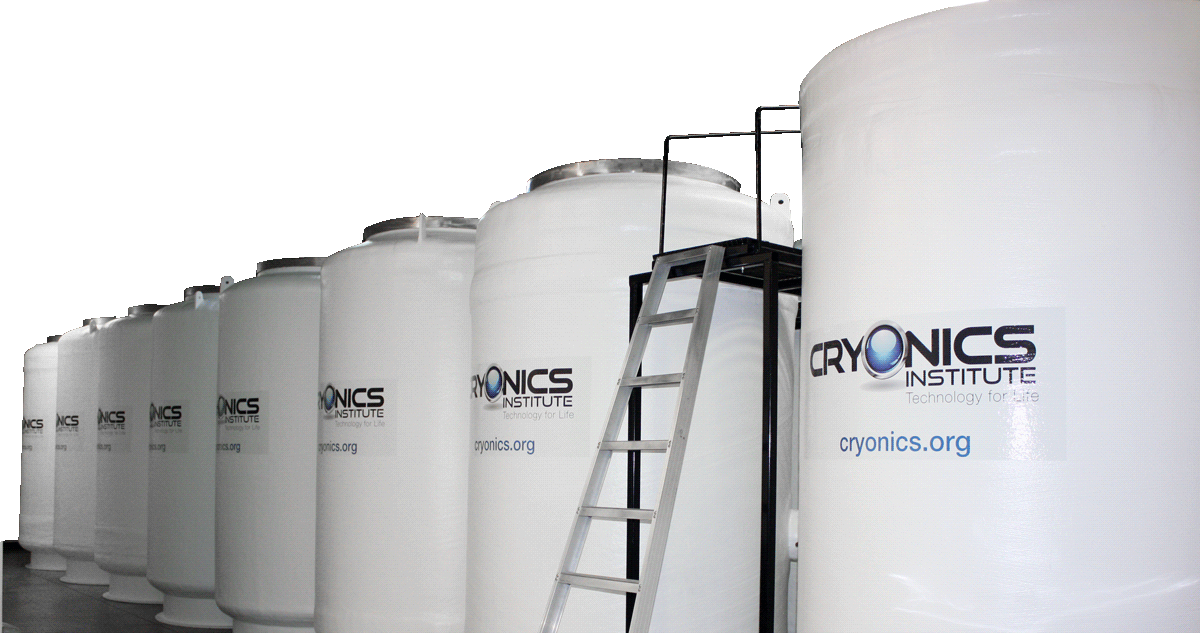
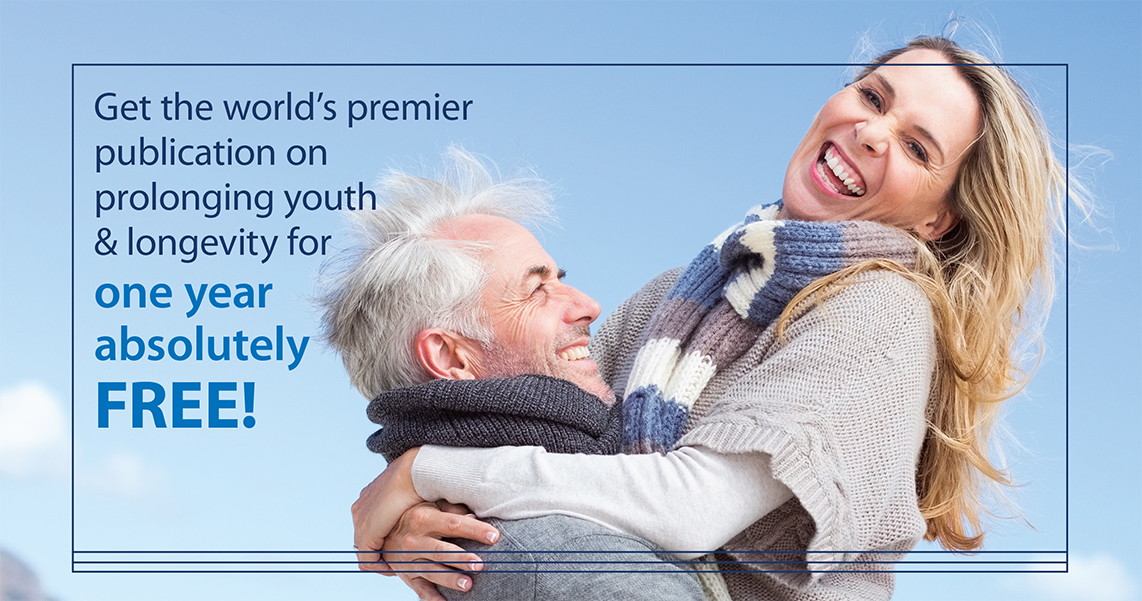
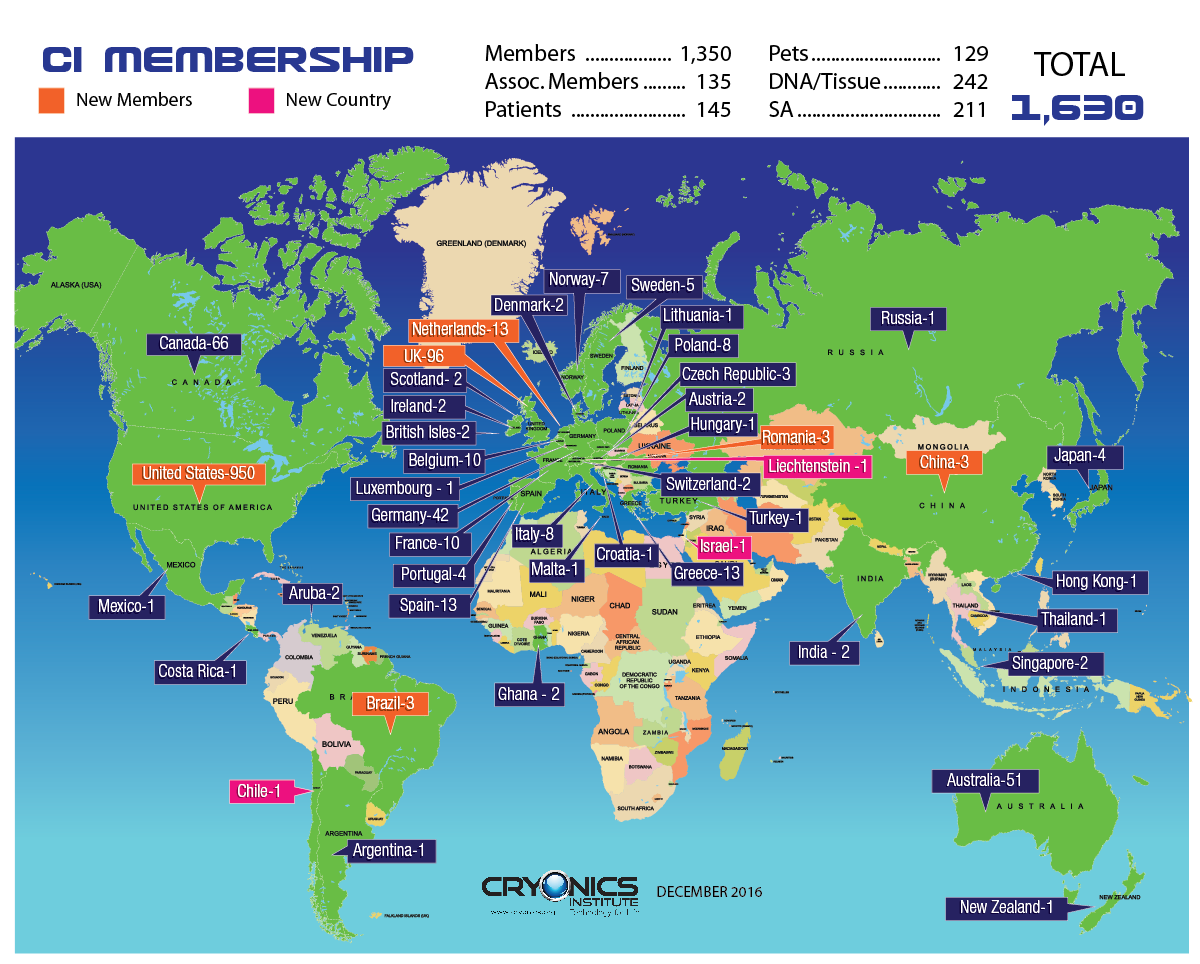

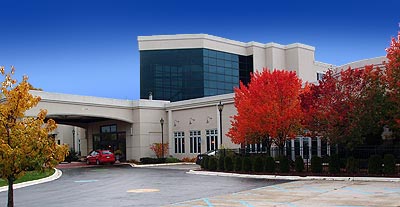 ConCorde Inn
ConCorde Inn